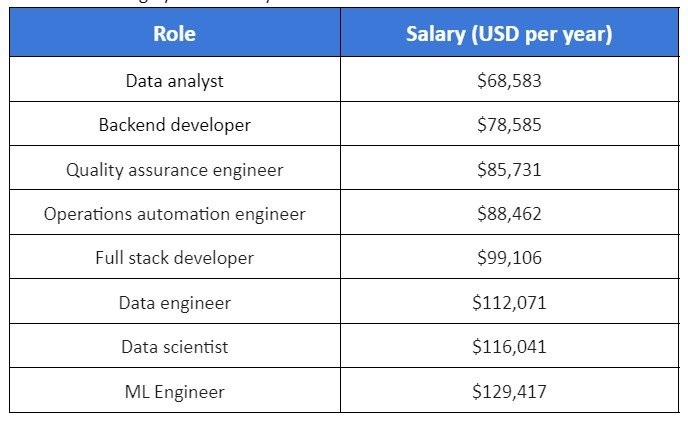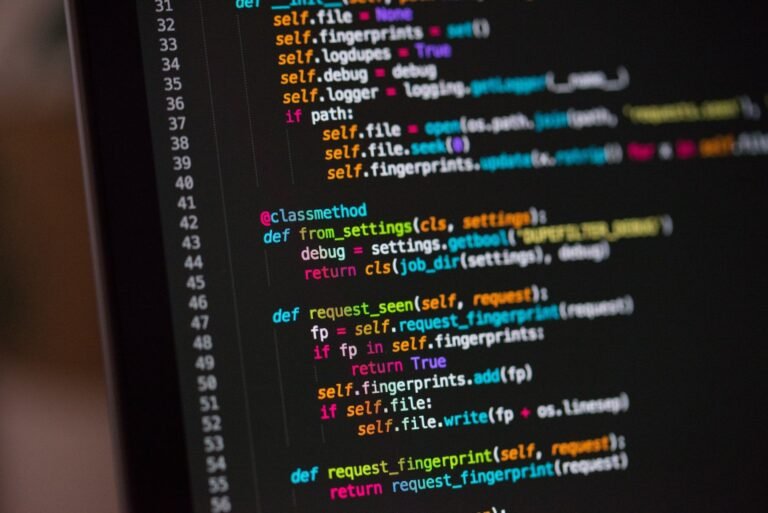Should I Learn Python Or R for Data Analysis: Expert Insights
Learn Python for versatility and simplicity. Choose R for specialized statistical analysis.
Python and R are both powerful tools for data analysis. Python is a versatile language, popular for its ease of use and extensive libraries like Pandas and NumPy. It’s widely used in various fields, including web development and machine learning.
R, on the other hand, is tailored for statistical analysis and data visualization. It excels in handling complex statistical computations and offers specialized packages like ggplot2 for creating advanced plots. Your choice depends on your specific needs. If you require general-purpose programming and broader applications, Python is ideal. For intensive statistical work, R might be more suitable. Both have strong communities and abundant resources for learning and support.
Credit: priya-reddy.medium.com
Overview Of Python
Python is a powerful and flexible programming language. It’s widely used for data analysis. Python’s simplicity and readability make it popular among beginners and experts alike.
Key Features
Python has several key features that make it ideal for data analysis:
- Easy to Learn: Python has a simple syntax. It reads like English.
- Open Source: Python is free to use. It has a large community.
- Versatile: Python supports multiple paradigms. It includes procedural and object-oriented programming.
- Extensive Libraries: Python offers many libraries. These libraries simplify data analysis tasks.
Popular Libraries
Python boasts a rich ecosystem of libraries for data analysis:
- Pandas: Used for data manipulation and analysis. Pandas handle large datasets efficiently.
- NumPy: Provides support for arrays. It also offers mathematical functions.
- Matplotlib: A library for creating static, animated, and interactive visualizations.
- Scikit-Learn: Used for machine learning tasks. It includes classification, regression, and clustering algorithms.
- Seaborn: Built on Matplotlib. Seaborn provides a high-level interface for drawing attractive statistical graphics.
Overview Of R
R is a powerful language for data analysis and statistics. It is widely used in academia and industry for data manipulation, visualization, and statistical modeling. Created by statisticians, R excels in handling complex data sets and performing intricate analyses.
Key Features
R offers a range of key features that make it ideal for data analysis:
- Comprehensive Statistical Analysis: R provides extensive libraries for statistical tests and modeling.
- Data Visualization: R has tools like ggplot2 for creating stunning visuals.
- Open Source: R is free to use and has a large, supportive community.
- Data Handling: R can manage large and complex datasets efficiently.
- Extensible: Users can create their own packages to extend R’s functionality.
Popular Packages
R’s capabilities are greatly enhanced by its vast array of packages:
| Package | Purpose |
|---|---|
| ggplot2 | Advanced data visualization |
| dplyr | Data manipulation |
| tidyr | Data tidying |
| shiny | Building interactive web apps |
| caret | Machine learning |
These packages simplify complex data tasks and enhance productivity. They also make R a versatile choice for data analysis.
Ease Of Learning
Deciding between Python and R for data analysis depends on ease of learning. Both languages have strengths. Understanding their learning curves can help in making a choice.
Python For Beginners
Python is famous for its simple syntax. The syntax resembles English, making it easy to read and write. Python’s clear structure is ideal for beginners. New learners can quickly pick it up and start coding.
Python has a wide range of learning resources. Beginners can find many tutorials, books, and online courses. The Python community is large and supportive. New coders can easily find help and answers.
Python’s libraries like pandas and NumPy are powerful for data analysis. They simplify complex tasks with few lines of code. Python is versatile, useful for web development, machine learning, and automation.
R For Beginners
R is designed for statistical computing and data analysis. It may seem complex initially, but it’s powerful for statistics. R’s syntax is different from other languages. It can be less intuitive for beginners.
R offers many packages for data analysis. The tidyverse package is popular for data manipulation and visualization. R’s community is also helpful. New learners can find forums and groups for support.
R is excellent for statistical tasks. It has built-in functions for complex statistical calculations. R is widely used in academia and research. Many statisticians and data scientists prefer R for its precision.
| Feature | Python | R |
|---|---|---|
| Syntax | Simple, English-like | Complex, tailored for statistics |
| Learning Resources | Abundant | Many, especially for statistics |
| Community Support | Large, supportive | Helpful, focused on statistics |
| Applications | Versatile | Statistical Analysis |
Both Python and R are great for data analysis. Choosing one depends on your specific needs and learning preferences.
Performance Comparison
When deciding between Python and R for data analysis, performance plays a critical role. Let’s dive into a detailed performance comparison focusing on two key aspects: Speed and Efficiency.
Speed
Speed is essential for data analysis. Python generally runs faster. Python’s libraries like NumPy and Pandas are optimized for speed. R can be slower for large datasets. However, R’s data.table library is quite fast.
Here’s a quick comparison:
| Operation | Python | R |
|---|---|---|
| Loading Data | Fast | Moderate |
| Data Manipulation | Fast (with Pandas) | Fast (with data.table) |
| Model Training | Fast | Moderate |
Efficiency
Efficiency measures how well a language uses resources. Python is efficient with memory. It handles large datasets well. R can use more memory than Python. But R’s packages like dplyr help in managing resources efficiently.
Consider the following points:
- Python: Efficient with memory, great for large datasets.
- R: Memory-intensive, but efficient with the right packages.
Python and R both offer great tools for data analysis. Your choice depends on your specific needs for speed and efficiency.
Community And Support
Choosing between Python and R for data analysis can be challenging. One important aspect to consider is the community and support available for each language. Both Python and R have vibrant communities that can help you learn and solve problems. Let’s explore the community support for both languages.
Python Community
The Python community is vast and active. There are many forums, such as Stack Overflow, where you can ask questions and get answers quickly. You can also find numerous Python user groups in many cities around the world.
Python’s community offers:
- Comprehensive documentation and tutorials.
- Active discussion forums and mailing lists.
- Many online courses and books.
- Regular conferences and meetups, such as PyCon.
These resources make it easier to find help and learn new skills.
R Community
The R community is also strong and supportive. R has a dedicated community of statisticians and data scientists. The R tag on Stack Overflow is very active, providing solutions to many problems.
R’s community offers:
- Extensive documentation and vignettes.
- Active mailing lists and forums.
- Numerous tutorials and guides.
- Regular conferences and events, like useR!.
These resources help users stay updated and solve challenges quickly.
Credit: blog.revolutionanalytics.com
Use Cases
Choosing between Python and R for data analysis can be challenging. Each language has unique strengths and applications. Understanding the use cases of each can help you decide.
Python Applications
Python is a versatile language. It’s used in various fields:
- Data Analysis and Visualization: Libraries like
pandasandmatplotlibmake data handling easy. - Machine Learning: Libraries such as
scikit-learnandTensorFlowpower machine learning projects. - Web Development: Frameworks like
DjangoandFlaskare popular for building web applications.
Python’s syntax is simple and readable. This makes it great for beginners.
R Applications
R is designed for statistical analysis. It excels in several areas:
- Statistical Computing: R has numerous packages for statistical tests and models.
- Data Visualization: The
ggplot2package is powerful for creating detailed plots. - Bioinformatics: R is widely used in bioinformatics for data analysis.
R’s statistical capabilities are unmatched. It’s favored by statisticians and researchers.
Expert Opinions
Choosing between Python and R for data analysis can be tough. Both languages have their strengths and specific use cases. To help you decide, we have gathered opinions from industry professionals and academic experts.
Industry Professionals
Many industry professionals favor Python for data analysis. Python is known for its versatility and ease of learning. Here are some key points from industry experts:
- Python’s versatility: Python is used in various fields, not just data analysis.
- Strong libraries: Libraries like
pandasandNumPymake data manipulation easy. - Community support: Python has a vast and active community.
- Integration: Python integrates well with other technologies and frameworks.
Academic Insights
In academia, R is often preferred for data analysis. R was designed specifically for statistical analysis and graphical models. Academic experts highlight the following:
- Statistical Packages: R has a wide range of statistical packages.
- Visualization: R excels in data visualization with packages like
ggplot2. - Academic Research: R is frequently used in academic research projects.
- Free and Open Source: R is free to use and open-source.
Both Python and R have strong points. Your choice may depend on your specific needs and background. Here is a quick comparison table to summarize:
| Criteria | Python | R |
|---|---|---|
| Versatility | High | Moderate |
| Ease of Learning | Easy | Moderate |
| Community Support | Extensive | Strong |
| Statistical Analysis | Good | Excellent |
| Data Visualization | Good | Excellent |

Credit: www.coursera.org
Frequently Asked Questions
Which Is Better For Data Analysis, Python Or R?
Python and R both excel in data analysis. Python is versatile and integrates well with other technologies. R is specialized for statistical analysis and visualization. Your choice depends on your project requirements.
Is Python Easier To Learn Than R?
Python’s syntax is simple and intuitive, making it easier for beginners. R, while powerful for statistics, has a steeper learning curve.
Do Data Scientists Use Python Or R More?
Python is more popular among data scientists due to its versatility. R is favored for specialized statistical tasks and academic research.
Can I Use Python And R Together?
Yes, you can use Python and R together. Tools like RPy2 and Jupyter support both, allowing seamless integration in your projects.
Conclusion
Choosing between Python and R depends on your specific needs. Python offers versatility and ease of learning. R excels in statistical analysis and visualization. Both languages have strong communities and extensive libraries. Evaluate your goals and projects to decide which to learn.
Either way, you’ll gain valuable skills for data analysis.





